Browse Exhibits (9 total)
Uncle Wonder's Workshop
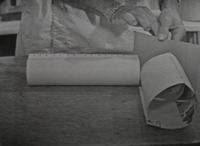
1958, 26 episodes, WCET (Cincinnati)
From WNET:
"Uncle Wonder makes the principles of the sciences simple for the pre-school child. Glenn Ryle, as Uncle Wonder, participates with children in their own world to help them discover some of the “truths” of the world. The series emphasizes power and includes simple demonstrates of natural phenomena such as gravity, sound, light, etc. Uncle Wonder operates in a three-part workshop: workbench for woodworking and demonstrating; nursery section for planting and plant demonstrations; and a laboratory setting for work with water, chemicals, and other liquids. Uncle Wonder makes the principles of the sciences simple for the pre-school child. He uses domestic objects, such as a milk bottle or a bar of soap, to illustrate how rain is formed or how surface tension works. Many of his TV experiments can be duplicated in the home with materials normally at hand. Uncle Wonder in each program invites his viewers into his workshop where he answers many of the questions of wonderment that fill the minds of little folk."
Sing Hi, Sing Lo
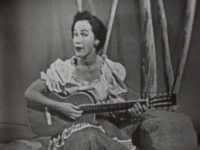
104 episodes, 1958-1959, KQED (San Francisco)
From WNET:
"'Sing Hi – Sing Lo' presents for youngsters the folklore of America through folk dances and folk song. Each program concentrates on one subject; some of the programs include appropriate film clips to better illustrate the material. The folk songs (sing by Bash Kennett who accompanies herself on her guitar) are tied in with the narration; while many of the songs are familiar to the children of America, some of them are lesser known and are truly descriptive of times past. A group of young dancers performs some of the songs. Through “Sing Hi – Sing Lo,” children will learn about people, events and customs which are a part of American history. They will better know their own country and understand the purposes, traditions and activities of their land. The series was produced by KQED, San Francisco, with Kay Rawlings as producer."
The friendly giant
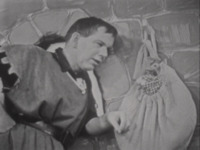
455 episodes, 1954-1959, 1966-1967, WHA-TV (Madison, Wisconsin) and Canadian Broadcasting Corporation
From WNET:
"Probably the oldest continuing children’s program on public television, THE FRIENDLY GIANT is Robert Homme (pronounced “hummy”). The outsized “Giant” (who seems so big because he lives in a video world of miniature buildings and stage props) works with puppets to communicate knowledge and information on subjects ranging from pets to the weather. The program is designed for children ranging in age from three to seven.
Each program opens in a farmyard where Friendly towers over miniature sets. He talks about farmyard animals and then invites his young viewers into his Castle where he reads stories, sings songs and talks with his little puppet friends."
Puppets in THE FRIENDLY GIANT are Rusty the Rooster and Jerome the Giraffe, operated and given voice by Rod Coneybears, and puppet casts Angie and Fiddle, operated by John and Linda Koegh.
THE FRIENDLY GIANT was first produced by WHA-TV, Madison, Wisconsin. Premiering May 1954, it was one of the longest running NET series and was nationally recognized as an outstanding program for children. For three consecutive years it won Ohio State Awards. Mr. Homme, its creator, a graduate of the University of Wisconsin who has done extensive radio programming in music, moved to Canada and has continued with THE FRIENDLY GIANT for the Canadian Broadcasting Corporation since 1958.
THE FRIENDLY GIANT is a presentation of National Educational Television. It was produced for the Canadian Broadcasting Corporation by Doug Davidson.
The finder
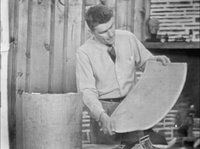
52 episodes, 1954-1955, KETC (St. Louis)
From WNET:
"“The Finder” is a series of programs intended for children between nine and twelve years of age and is designed to promote their educational development as well as to entertain them. Produced by Richard Hartzell, director of children’s programs at KETC in St. Louis, the program is built around Sunny Fox, an announcer with the curiosity and imagination of an explorer. Each of the programs follows him as he discovers new things of interest in the St. Louis area and, through books, films, and studio interviews, throughout the world. Fox, a former Korean correspondent for the State Department’s Voice of America, also has had experience with the American Broadcasting Company and Columbia Broadcasting System. Some of the subjects presented are present day pioneers of aviation, history through ballads, stories of the past done in cooperation with the Missouri Historical Society, and Indian stories and legends. Each week, the program features a new book, always non-fiction, on some subject of educational interest to young people."
Discovery
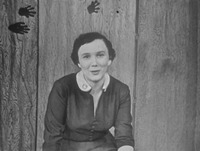
39 episodes, 1957, WGBH (Boston)
From WNET:
"'Discovery' produced by WGBH-TV aims to make learning about the world in which we live an adventure for young people -- an advantage that opens the doors to many fields of scientific knowledge. Living animals and plants and other visuals become the illustrations for what the producers of “Discovery” call “how learning” -- how something causes something else, how change in one situation is related to another, how animals are adapted to live in their specific environments, and how plants, animals and man are related to one another. Airing not only to stimulate intellectual curiosity about the world around us, but hoping also to encourage creative activity on the part of young viewers, emphasis is placed on what the child can do at home. Guest on the programs include scientific experts as well as boys and girls with science hobbies. The presentations are straightforward and the demonstrations interesting and unusual enough to command the attention of upper elementary grade students, junior high, and even high school biology classes.
Featured Personality: Mary Lela Grimes
The producer, writer and narrator of the “Discovery” series is a young woman from North Carolina: Mary Lela Grimes. All of her life she has had nature hobbies such as collecting butterflies, keeping wild pets, naming plants, studying minerals, and watching birds. After her graduation as a Phi Beta Kappa from the University of North Carolina, she became director of the Durham Children’s Museum and wrote a daily column on nature for the Durham Herald Sun. When she and her husband moved to Boston, she joined the staff of the Massachusetts Audubon Society, working in the elementary science teaching program. She also did newspaper, radio and TV work for the Society and helped organize and direct the Society’s Wildwood Nature Camp at Camp Barre, North Carolina. In 1954, Mrs. Grimes was awarded a fellowship to study communications by the National Wildlife Federation. she spent a year at Boston University (where she received her MS) and there began working with WGBH-TV in planning science programs for children. It was here that the idea of “Discovery” was born."
Discovery at the Brookfield Zoo
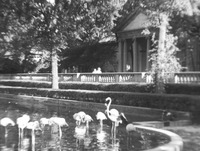
13 episodes, 1959, WTTW (Chicago)
From WNET:
"Mary Lela Grimes returns with program which are essentially a continuation of the original “Discovery” series. Moved to a new locale, Chicago’s Brookfield Zoo, the series will introduce its viewers to the strange and wonderful inhabitants of a zoo. Through visits to various cages, viewers learn about the families who live in them."
Fignewton's Newspaper
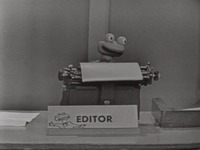
24 episodes, 1958, KETC (St. Louis)
From WNET:
"This series of programs deals with social studies concepts for the preschool and primary grade school child. Puppeteers Leo and Dora Velleman use the puppet medium to communicate concepts about the school, the home and the community."
A number of things
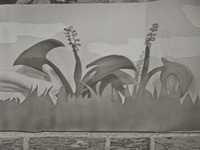
52 episodes, 1958, KETC (St. Louis)
From WNET:
"'The world is so full of a number of things, I’m sure we should all be happy as kings,' says Dora Velleman in opening the National Educational Television series, “A Number of Things.” Each concept is covered in story form, accompanied by sketches, puppets, felt-board illustrations, or a make-do theater of a peep-show parade. Dora tells the story to Fignewton Frog, a puppet, and she has a special review session at the end of each program, to distinguish fact from fantasy. Through the program, children in the pre-school and primary school age groups will learn simple natural science concepts and will be stimulated to do some of the experiments themselves, using the illustrating techniques. The series was produced by KETC, St. Louis, with Bob Miller, producer."
Tales of Poindexter

52 episodes, 1957, WKNO (Memphis)
From WNET:
"This series will present a learning experience to preschool and early primary school children through the use of children's fairy and fantasy stories. It is the purpose of this series to acquaint and re-acquaint the children with the classic stories which are often neglected in modern times. By the use of an explanatory technique showing both the good and evil in the stories, the child will be exposed to certain moral principles not commonly brought out in a children's program. By having as one of the principles in the program series a puppet dog, Poindexter, who has many of the same characteristics as the viewing child, a certain rapport can be established between the viewer and the puppet. Tom Tichenor, professional puppeteer, created Poindexter and is responsible for the programs."

